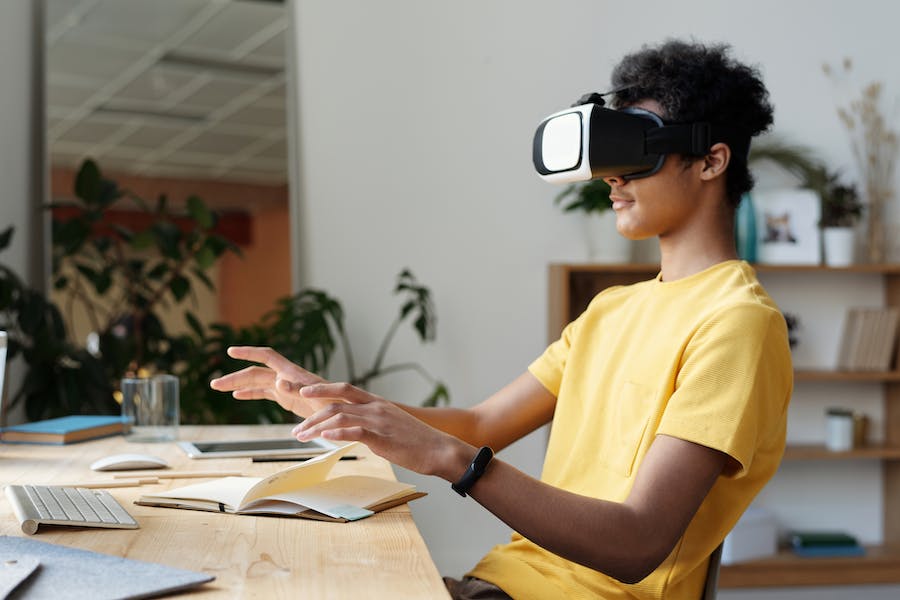Subject Spotlight: 2D, 3D, AR and VR Animation
What is 2D, 3D, AR and VR Animation?
Welcome to the exciting world of 2D, 3D, AR and VR Animation. If you have a passion for storytelling, creativity, and technology, this field offers an opportunity to bring your ideas to life in dynamic and interactive ways. 2D and 3D Animation involve creating moving images using two-dimensional and three-dimensional digital models. Augmented Reality (AR) and Virtual Reality (VR) Animation take this a step further, creating immersive environments that can be interacted with in a seemingly real or physical way.
Why Study 2D, 3D, AR and VR Animation?
Here are some compelling reasons:
- Innovative and Creative: It’s a field where art and technology meet, offering endless possibilities for innovation and creativity.
- Growing Industry: With the rise of virtual reality and augmented reality technologies, there’s increasing demand for skilled animators.
- Broad Applications: Skills in animation can be applied across various industries, including film, gaming, advertising, and education.
What’s it like to study 2D, 3D, AR and VR Animation?
Studying 2D, 3D, AR and VR Animation involves learning about computer graphics, modelling, animation techniques, and interactive design. It combines theoretical learning with practical projects, allowing you to build a portfolio of work.

What Can You Do with a 2D, 3D, AR and VR Animation Degree?
A degree in 2D, 3D, AR and VR Animation can lead to a variety of careers where you’ll bring stories and concepts to life through dynamic visuals. Here are some potential roles:
- Animator: Animators create 2D or 3D characters, scenes, and special effects for films, video games, or television shows. They use software to build models and animate them, bringing them to life with movement and personality.
- Visual Effects Artist: Visual effects artists create special effects, animation, and do visual clean-up for feature films and commercials. They work closely with directors to realise their vision and often specialize in areas like compositing, rotoscoping, or matte painting.
- Game Designer: Game designers work on the creative aspects of video games. They may design characters, levels, puzzles, art, and animation. In larger studios, they may specialise in a single area; in smaller studios, they might work on a bit of everything.
- Motion Graphics Designer: Motion graphics designers create animated 2D and 3D images, usually for media outlets like TV, film, or the web. They might create everything from title sequences to brand animations.
- AR/VR Developer: AR and VR developers create immersive experiences for users. They might work on games, educational apps, or training programs. This role requires a strong understanding of both animation and programming.
Each of these roles requires a strong artistic sense, technical proficiency, and a keen eye for detail. As you progress in your career, you may have the opportunity to specialise further, lead creative teams, or even start your own animation studio.
Professional Bodies for 2D, 3D, AR and VR Animation
Key professional bodies include The Animation Guild, International Game Developers Association (IGDA), and VR/AR Association. These organisations provide resources, set industry standards, and offer networking opportunities.
Careers for 2D, 3D, AR and VR Animation Graduates
Graduates can work in a range of roles such as animators, visual effects artists, game designers, or motion graphics designers. They contribute to creating engaging visuals for films, games, advertisements, and immersive virtual environments.
Skills that 2D, 3D, AR and VR Animation Students Need
Students need strong artistic skills, creative thinking, and proficiency in animation software. They should also have good problem-solving skills, an understanding of motion and space, and the ability to work on detailed projects over extended periods.
Typical Degree Titles that are 2D, 3D, AR and VR Animation Focused
Degree titles might include Bachelor of Arts in Animation, Bachelor of Science in Computer Animation, Master of Fine Arts in 3D Animation and VFX, or Master of Science in Virtual Reality. Some programmes may offer specialisations in areas like character animation, visual effects, or game design.

By completing an NCUK qualification, you have access to a wide range of 2D, 3D, AR and VR Animation courses with our University Partners. Find more information about the wide range of courses, the universities offering them and the entry requirements using our course finder.